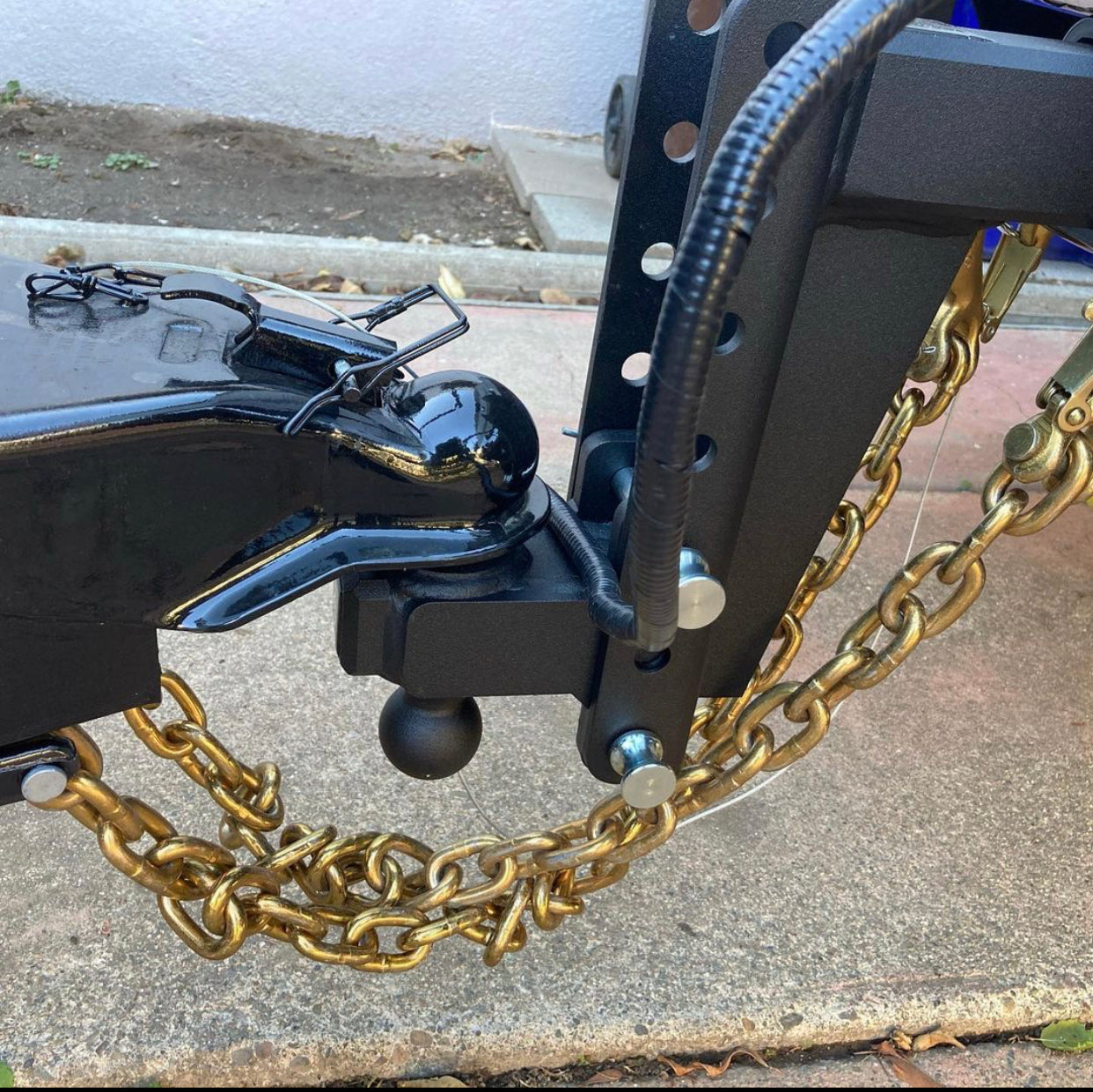
Safety chains are one of your trailer’s most essential parts and are crucial in towing a trailer safely. Safety chains attach the trailer to the hitch of the tow vehicle. The chains should be strong enough to hold the tow vehicle’s weight and the trailer, should they need to do so. Each chain should have a different attachment point to the tow vehicle.
Having safety chains of the correct length is extremely important for safety. You should ALWAYS crisscross your safety chains beneath the hitch and coupler. While crisscrossing them, be sure that you’ve allowed enough slack in the chains to turn. Do not confuse this with twisting the chains. You should NEVER twist the chains, this can lead to them becoming damaged and ultimately failing to work effectively. You also want to be sure that the chains will hold the tongue up if the trailer were to come loose. If a ball or coupler failure arises, the safety chains ensure that your tow vehicle and trailer remain connected until you can safely stop. Examples of coupler failures include the coupler coming off the ball, the ball coming off the hitch, the hitch coming out of the vehicle receiver, and the coupler becoming detached from the trailer drawbar.
On long trips, you should be stopping regularly to check your chains. Stopping to get gas? Check the chains!! Replace any safety chains that show wear and tear, as worn chains can become defective and ultimately fail when needed. Safety chains should NEVER drag as your drive.
As you’re connecting the trailer, make sure the chain to the emergency brake box (Breakaway Actuator) is shorter than the trailer safety chains. The brake box will fail to activate if the chain to the box is longer than the safety chains.
Check that your safety chains meet the correct classification according to Gross Vehicle Weight Rating (GVWR). GVWR is the vehicle manufacturer's weight limit indicating the total amount the vehicle can weigh to operate safely. The strength rating of each length of the safety chain or its equivalent and its attachments needs to be equal to or exceed in minimum breaking force the GVWR of the trailer.
|
Safety Chain or Trailer Classification |
Breaking Force Minimum |
|
Class 1 |
2,000 Ibs |
|
Class 2 |
3,500 Ibs |
|
Class 3 |
5,000 Ibs |
|
Class 4 |
10,000 Ibs |
Many states require by law that safety chains be used while towing. Be sure to refer to the laws regarding safety chains in your state prior to installing your chains and towing.
Questions about safety chains? Call our expert team at BulletProof Hitches today at 941-251-8110. Or, you can fill out our easy-to-use online form to find out more!
